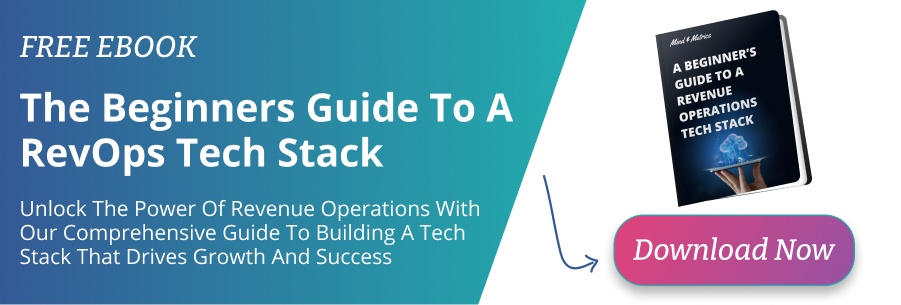Running a successful business means ensuring there is synergy between all the teams involved in acquiring revenue. Your marketing team needs to bring in best-fit customers, sales needs to close deals, and your customer service team has to address any issues that may arise after purchase.
All of these revenue-focused teams fall under the umbrella of Revenue Operations, or RevOps. RevOps is a business methodology that unites these teams in order to maximize their performance, keep them growing, and make them accountable for revenue metrics.
While a Revenue Operations methodology is critical for many businesses, it hasn't always been. Let's take a quick look at the rise of Revenue Operations and how it came to be integral to so many organizations today.
The Primary Tenets of Revenue Operations
There are four major building blocks of an effective RevOps strategy. These are what help teams funnel revenue and make strategic decisions. The tenets are:
-
Centralized Data: gather relevant customer data and store it in a centralized location that is accessible to all RevOps teams.
-
A Strong Toolkit: develop a strong digital toolkit that helps the organization function correctly.
-
A Clear Strategy: develop a strategy that integrates the established tools in a company-wide plan.
-
Company-Wide Processes: implement processes that are consistent across the entire company and ensure all teams have access to updated data.
These building blocks help break down barriers between different business departments and enable each team to make data-driven decisions. That way, all these departments are united under the same goals, and those goals are backed by insights.
The four building blocks of RevOps can be easily adapted so that they fit different business models. However, by sticking to the foundations of what RevOps is, teams are able to start seeing new and expansive growth.
The Rise of Revenue Operations
Revenue Operations functions have been on the rise, especially since the beginning of the Covid-19 pandemic. That's because RevOps methodologies help businesses better target customers and remain revenue-focused, even during difficult times.
As the nature of spending and consumer behavior was altered drastically, traditional sales strategies simply weren't working for many businesses anymore. They needed to find a new way to reach their customers and still drive revenue.
That's how a unified approach to sales was created. In Revenue Operations, departments are much more connected, working toward the common goal of building revenue rather than conducting segregated operations.
With a successful Revenue Operations plan in place, businesses found themselves able to stay on target, maintain a more cohesive strategy, and improve communication.
Improve Your B2B Sales With Revenue Operations
Implementing a RevOps strategy is becoming more and more essential for success in today's world. RevOps helps unify organizations, boost sales, improve communication, and spur company growth.
Uniting the departments in your company through Revenue Operations will quickly lead to significant benefits for everyone involved. And when customer-oriented teams are more aligned in terms of their goals and the data they have access to, they will be able to create more personalized experiences for customers and leads.
This all sounds well and good, but for many companies making the switch to RevOps isn't a simple, straightforward process. It often involves a complete overhaul of their tech stack and current daily processes. For an in-depth tutorial on picking out software with the right functionality for a RevOps strategy, check out our eBook, A Beginner's Guide to a Revenue Operations Tech Stack. Click the link below to download for free.
